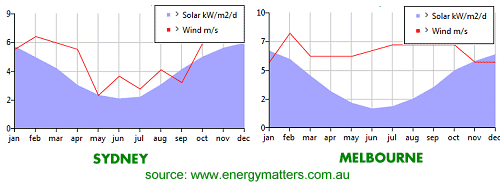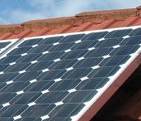With winter solstice – the shortest day of the year – upon us, it’s an appropriate time to bust another myth about rooftop solar panels.
While today is still 24 hours long, the tilt of the Earth means the sun rises late and sets early. However, owners of rooftop solar power systems aren’t necessarily shaking their fists at the sky, gnashing their teeth and rending their garments. Winter is still a good time for solar electricity production. They say that where there is life, there is hope. Well, in our industry, we say that where there is light, there is solar.
Do solar panels work better on hot days?
A popular misconception is that solar panels work best on the hottest days. This simply isn’t true. In fact it’s quite the opposite. Heat is the enemy of solar panels. It’s just that during summer the days are far longer which more than makes up for the impact.
Like solar inverters, not all solar panels are created equal and it’s the impact of heat that is one of the critical aspects that sets brands apart. An important module specification is called “temperature coefficient”. If the temperature coefficient rating of a panel is -0.46%, this means for each degree over standard testing conditions the module’s output is reduced by -0.46%. STC is 25 degrees Celsius.
Winter solar power is still viable
Cooler weather is the friend of solar as panels become more efficient in turning the sun’s rays into electricity. A blue-sky winter’s day can see some amazing levels of power produced on an hourly basis compared with summer. So, winter solar power is not an oxymoron.
Where winter does have a marked impact on production is in relation to cloud cover and shorter sun-hours. This does drag down overall electricity output compared to the summer months.
Let’s illustrate the differences throughout the year. Here’s a look at the average annual solar irradiation levels in Melbourne and Sydney:

Melbourne is not famous for clear sunny days during winter, but look at the above graph. It shows that solar panels for home Melbourne certainly experiences enough sunlight so that solar panels are more than viable.
To determine solar radiation resources in your area throughout the year, try Energy Matters’ solar quotes tool. This tool will generate:
- estimated electricity production per month, year,
- carbon emissions reductions and
- financial benefit information based on your location and the size of the system you select.
Also, keep the following in mind. If the sun in lower in the sky, the possibility of structures, natural and artificial, causing overshadowing increases. So, if you have trees north of your solar panels, those trees may shade them during the day in the winter.
Solar power system owners can think in the following way. A clear sky on a winter’s day – however cold or short it may be – warms the heart and lines the pocket through electricity bill savings. Plus winter solar power takes off the chill associated with the prospect of continually increasing electricity prices.
Related:
How Many Solar Panels Will I Need
Tips For Choosing Solar Panels












































